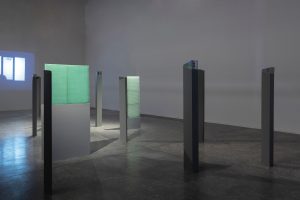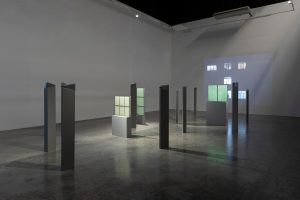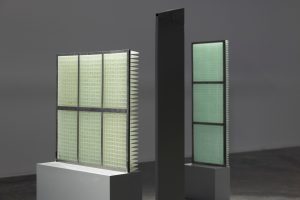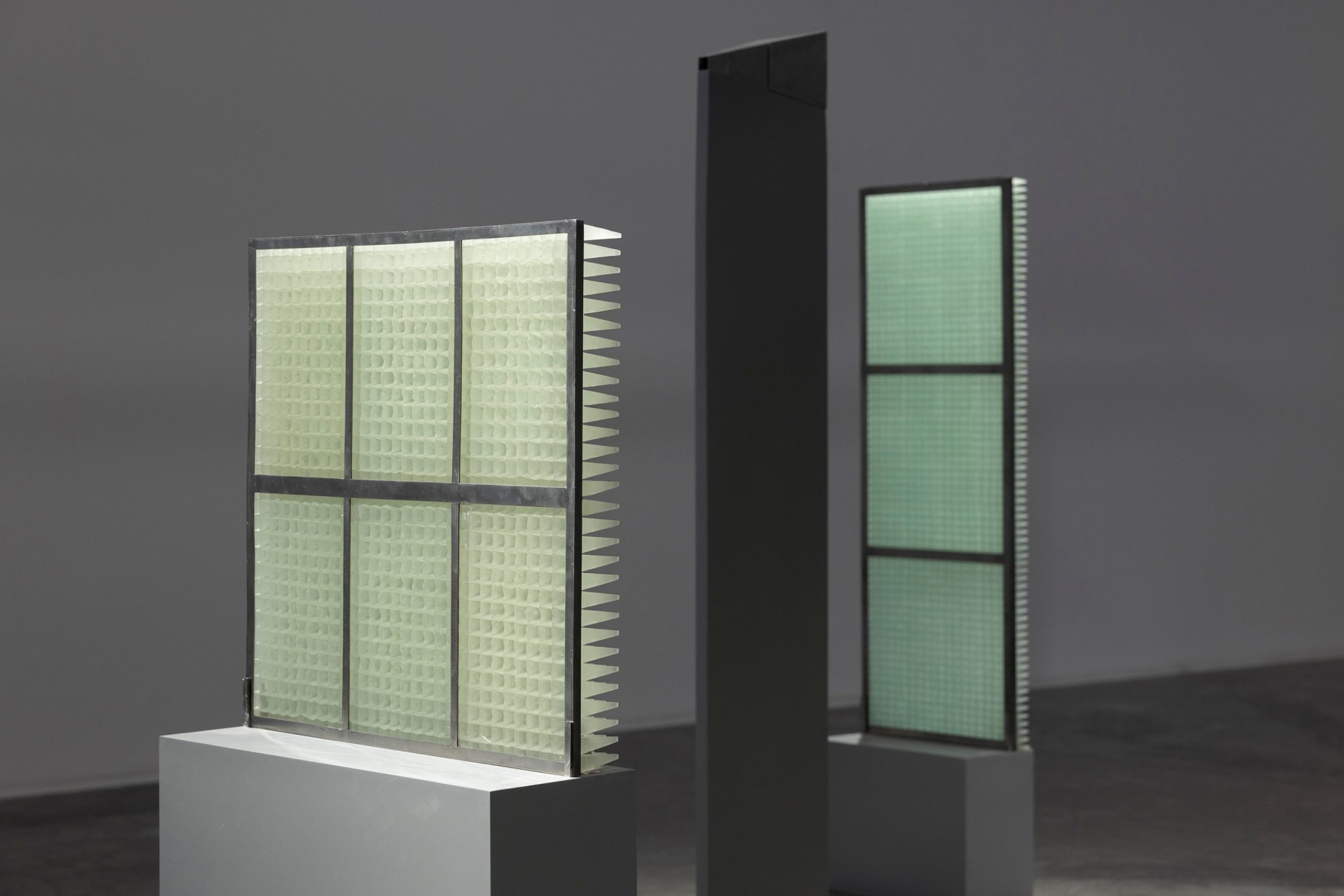Green Art Gallery presents Instruments of Viewing and Obscurity, a solo exhibition by Iranian artist Nazgol Ansarinia. On view until 28 October 2025, it investigates the interplay of vision, surveillance, architecture, and privacy. The exhibition unfolds in the gallery space as a kind of human-scale maze or model-city: large steel, glass, and stone structures form window-frames, extruded voids, watchtowers, and other architectural devices that both expose and obscure.
Through these artworks, Ansarinia stages a dual gaze. On the one hand, the viewer looks out and sees façades, windows, and brutalist residential blocks reminiscent of Tehran. On the other hand, this architecture returns the gaze: windows become thresholds where public and private meet, and where control, anonymity, and exposure are in tension.

Video projections play a central role. They show building façades transitioning from daylight into nighttime, fragmenting and recomposing visual perception. Sometimes the camera zooms into individual windows and dissolves the architectural infrastructure and social control, offering moments when intimacy breaks through surveillance.
The exhibition evokes a “phantom construction site”, spaces under construction or decay, memories of architecture, and thresholds that are fragile and resistant. The materials (glass, steel, and concrete) carry weight not just physically but politically. They bring back memories, hidden infrastructures, and questions about who builds, who watches, and who is watched.
About the artist
Nazgol Ansarinia (b. 1979, Tehran, Iran) resides in her hometown. She studied at the London College of Communication, earning a BA (Honours) in 2001, and went on to complete an MFA at California College of the Arts (San Francisco, USA) in 2003.

Working across sculpture, video, drawing, installation, and 3D-printed models, Ansarinia examines the structures of daily life (whether domestic, urban, or architectural) and the unseen social and political forces that shape them. Her practice frequently engages with issues of security, discipline, international politics, and media. It also probes the fragile boundaries between public and private spheres. Windows, façades, and light often appear in her work as devices of both openness and control, evoking the ways in which architecture and regulation govern what can be seen and what remains hidden.
Ansarinia has displayed her works in multiple shows, such as Diriyah Contemporary Art Biennale 2024 (Riyadh, KSA); C4 (solo) (Kunstmuseum Liechtenstein, Liechtenstein, 2022); The 10th Asia Pacific Triennial of Contemporary Art (APT10) (Queensland Art Gallery | Gallery of Modern Art, Brisbane, Queensland, Australia, 2021); Fragments, Particles and the Mechanisms of Growth (solo) (KIOSK, Ghent, Belgium, 2017); and The Great Game, Iranian Pavilion at the 56th Venice Biennale (Italy, 2015), to name a few.

In 2008, Ansarinia won the Abraaj Capital Art Prize and became a finalist of the Rolex Mentor and Protege Arts Initiative (Switzerland). Her art pieces are part of esteemed public collections, including the British Museum (UK), Los Angeles County Museum of Art (LACMA) (USA), and Centre Pompidou (France), among others.
To get more information about Instruments of Viewing and Obscurity, please visit the official web page of the exhibition.
Additionally, you might be interested in exploring The Gulf Through Time: Dariush Zandi’s Photographic Journey at Total Arts.





